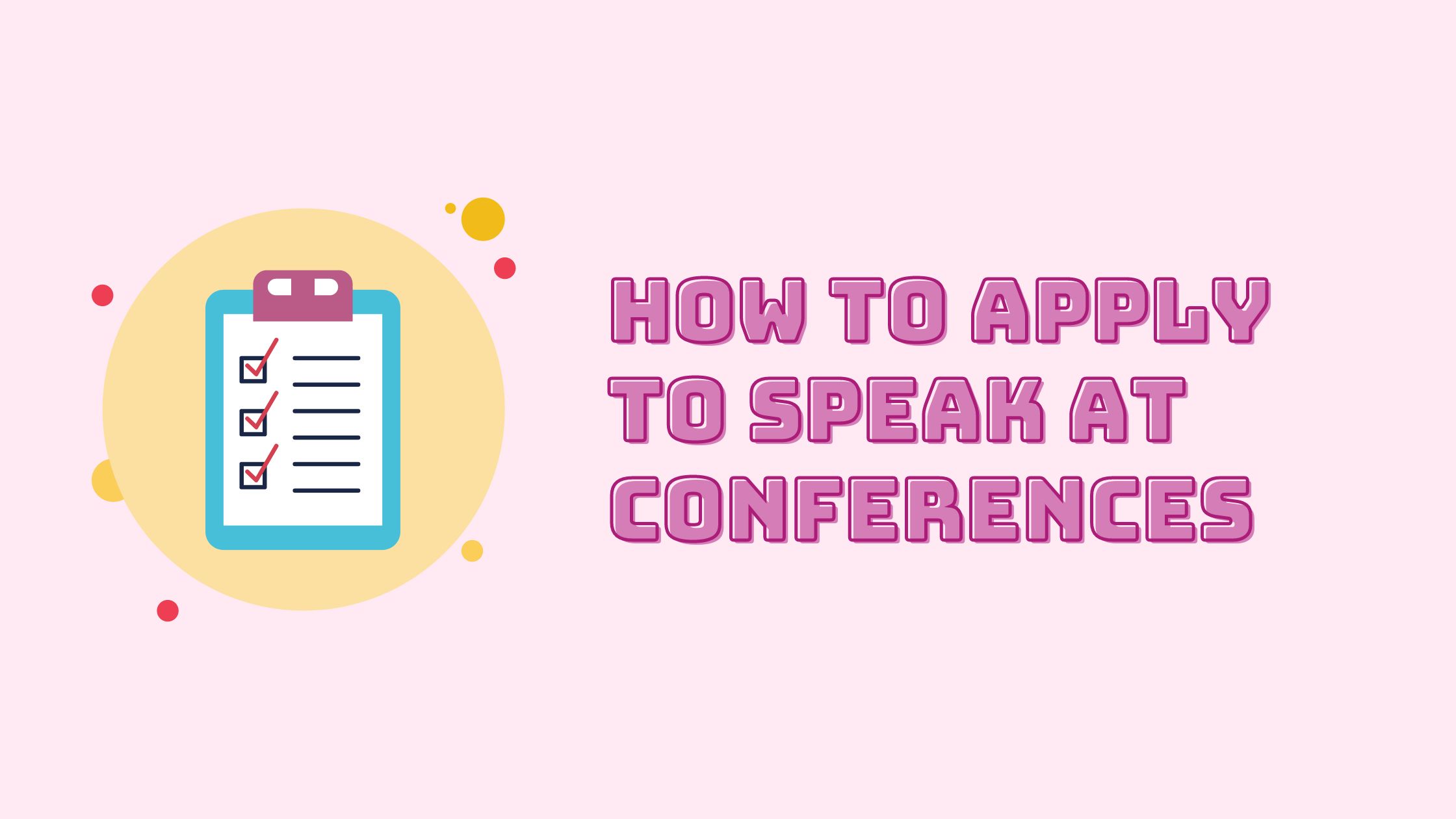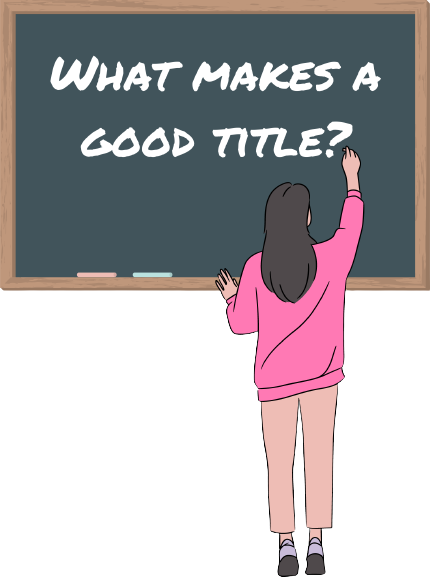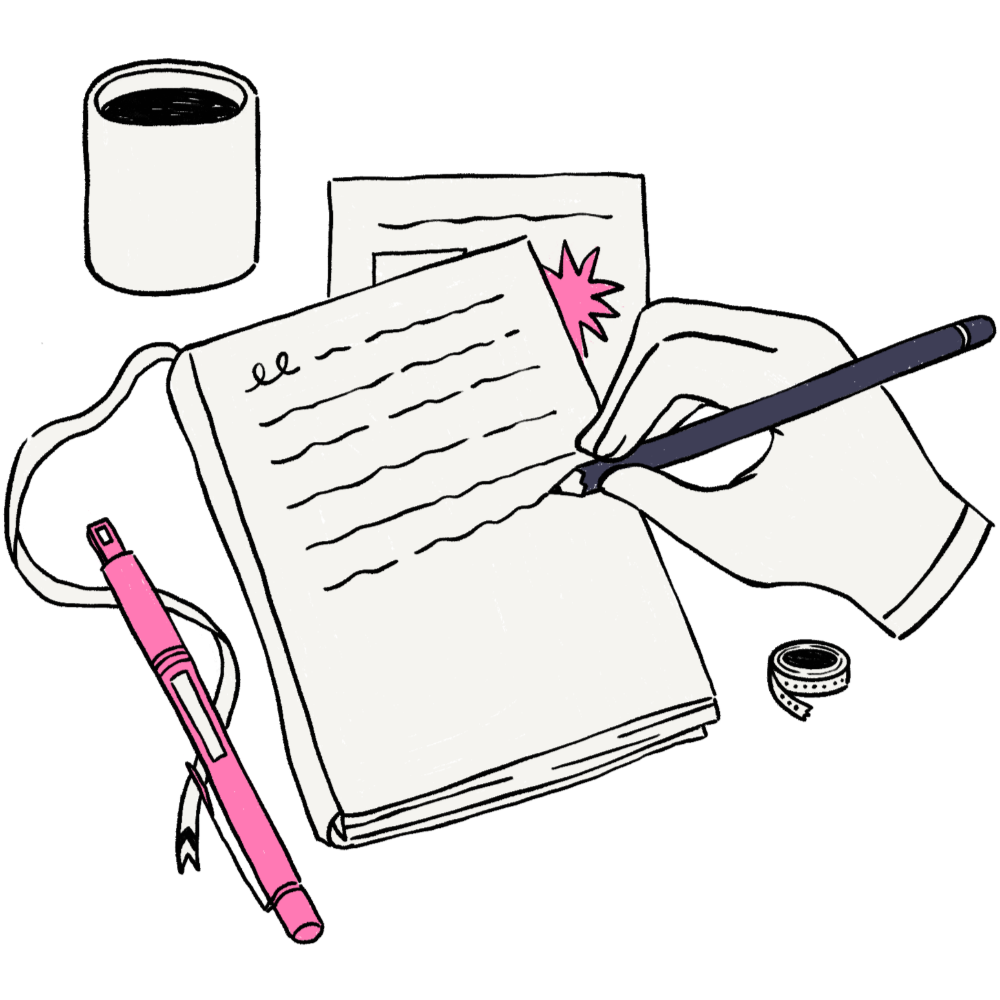How to Successfully Apply to Speak at Conferences
 Jemima Abu
Jemima Abu
In the previous article in this series, we covered how to find conferences to speak at. In this article, we'll be looking at the process of applying to speak at conferences.
Most conferences have open application forms for interested speakers to fill out called "Call for Papers (CFP)" or "Call for Speakers (CFS)". Conference organisers use these application forms to review talk submissions and determine which talks will be accepted for the conference.
Speaker application forms usually contain fields for speaker details (name, role, company, bio and social media) and talk details (title and abstract/description). In this article, we'll be looking at how to fill in the talk details.
Here's a quick summary of what we'll be discussing:
How do I come up with an idea for a talk?
How do I create a good title?
How do I fill out the abstract/description?
How do I make sure my talk gets accepted?
How Do I Come Up With An Idea For A Talk?

The first part of submitting a talk to a conference is knowing what you'd like to talk about. These are some ways to figure out what talk to submit to a conference:
1. Talk about what you know.
Experience, as they say, is the best teacher. If you've worked with something sufficiently enough to have gained expertise on that topic, then that's a great area to submit a talk on.
This could be anything from soft skills to in-depth technical solutions - you can talk about ways of working that improved your productivity or what code optimisation practices you've implemented at work.
People enjoy seeing real-life experiences and use cases, especially if they focus on improving existing processes or implementing easier solutions.
2. Talk about something you're passionate about.
I have a lot of accessibility-themed talks because I enjoy making presentations on the importance of accessibility and helping others learn how to make things accessible.
If you're the kind of person who can go on for hours about why a new JS framework is better than another new JS framework or anything of the like, then you'd feel right at home submitting a talk on that topic.
3. Talk about what's trending.
The world of technology is constantly changing, with new frameworks and libraries released every other day.
Conference audiences are always on the lookout for new trends as conferences are some of the best places to find out what's new in the field of technology, so these kinds of talks are particularly useful for conferences.
If you enjoy keeping up with the latest trends and fancy technology, you can submit a talk explaining the ways you've utilised the new tech. Alternatively, you can submit an opinion piece on why you don't approve of the latest buzzword.
4. Talk about your learning journey.
Whenever I have to learn a new technology or if I'm trying to understand a concept, I'll write an article or submit a talk on that idea to improve my learning journey. In creating a presentation to explain my experience or understanding of a concept, I gain a deeper understanding of it.
If you're using this method, you want to ensure that you've sufficiently understood the concept well enough to properly explain it to an audience. You can also include anything you would have wanted to know when you first started learning.
Topics like "How Learning {x} Made Me A Better {y}" or "5 Things I Learned from Learning {x}" are usually well-received by conferences.
5. Get inspiration from the conference.
This is a great way of coming up with talk ideas, especially if you're looking for best-fit talks for a particular conference. Some conferences have published videos of previous talks or include a list of talks they're looking for on the CFP page.
It's always a good idea to align your talk submissions with what the conference is looking for, so basing your talk on previous editions or requested topics will give you a better chance of having your talk accepted.
You can also check out this article on How to come up with conference proposal ideas by Lucy Bain for more ideas.
How Do I Create a Good Title?

A good title explains the general concept of your talk and lets your audience know what to expect at a glance.
I usually come up with titles by taking the summary of the talk and rewording it to something catchy.
"This talk is going to be about optimising the images and videos on your website to improve SEO and performance" would be reworded to "Image Optimization for Web Performance" and then, if I wanted something casual, "Large Images Are Ruining Your Website - Let's Fix That".
You can also look at previous talks for title inspirations or use pop culture references.
How do I write a talk abstract/description?

A talk abstract is a summary of the contents of your talk. This is usually what conferences publish on a speaker page for the audience to read. An abstract should be brief and engaging, usually between 3 to 5 sentences, and it should let the audience know why they should look forward to your talk.
I like to write my abstracts in the template:
Problem statement: The first part of your abstract should address the reason you're giving the talk, this is what the audience should be able to relate to.
Solution statement: This part of the abstract covers the solution to the problem statement, it should state how you intend to approach the topic.
Benefit statement: This is where you include the key takeaways from your talk, expand on what you wrote in the solution statement and write specific points the audience can expect to learn at the end of your talk.
Here's an example of an abstract from one of my talks:
Knowing how to build accessible products is important but it's just as important to know why we build products to be accessible.
In this talk, we'll explore the concept of accessibility to better understand its necessity and the ramifications involved in building non-accessible products.
We'll also answer pressing questions like "How do I know if this thing I built is accessible?" and "Whose job is it to ensure accessibility?" (Spoiler: it's everyone's job).
A talk description is a more in-depth explanation of your talk and it should expand on whatever you've written in your abstract. The description is usually used to provide more in-depth information about your talk for the conference organisers. This is where you can include specific points of what the audience can expect to learn or give an outline of the slides you'll be presenting.
Sometimes, "abstract" and "description" are used interchangeably but if a form has both, keep the abstract shorter and put the bulk of the information in the description.
How do I make sure my talk gets accepted?
It's impossible to know for sure if your talk will be accepted at a conference. Even if you have an excellent talk proposal, several factors could affect its acceptance.
The conference might have already accepted a similar topic, or they might have too many talks related to one track. It could also come down to conferences preferring local vs international speakers or newer vs experienced speakers.
Whatever the case, here are some things that are within your control to improve the chances of your talk being accepted:
Read the submission guidelines: Some conferences include instructions detailing what they want your talk submission to look like.
An instruction might be "List 3 to 5 bullet points of what the audience can expect from your talk". If your description contains only blocks of text instead, this might cause the reviewers to dismiss it outright.Stay on theme: When submitting to a conference, make sure the talk will be relevant to the audience.
Larger conferences usually have multiple tracks so they are open to different areas, however, some conferences are very niche so a submission for a generic or unrelated talk is likely to be rejected e.g. if a conference is related to a specific platform or framework, then talks that cater directly to that platform have a higher chance of being accepted.
Also, consider who the target audience of your talk will be - a beginner-focused talk introducing a concept would be fine for a larger conference but a smaller conference that focuses on a specific area might prefer a talk to be more advanced as most of the audience is likely to know the basic concepts.Explain the relevance of your talk: A talk submission form is meant to convince the conference reviewers to accept your talk and the best way to do this is by telling them why the audience would love your talk.
Your description or abstract should explain why this talk will be beneficial to the audience by focusing on the key takeaways and what the audience will learn.Spell check: Before submitting a talk, always review your submission for grammatical errors or spelling mistakes. I use the Grammarly extension on my laptop to identify any potential issues in my write-up.
You can reach out to any speakers you know or ask someone to help review your proposal before submitting it to a conference.
Some conferences also offer help for first-time speakers through mentorship programs or workshops on writing abstracts. Make sure to take advantage of these opportunities if they are available.Apply, apply, apply: The best way to get your talk accepted at a conference is to apply to as many conferences as possible. Once you have an idea, find all the conferences where the talk would be relevant and submit it to each one.
Always try to submit more than one talk to a conference (I usually submit 3 to 5). This increases your chances of having one or more of them selected as some conferences prefer having one speaker give multiple talks to cut down on the cost of logistics.
It also helps to diversify the types of talks you submit by including ones suited for intermediate and beginner audiences, or by submitting both a session and a workshop proposal.
Conclusion
Hopefully, this article has provided helpful insights on starting your journey as a conference speaker. Thanks for reading and good luck with your talk submissions!
This article is part of an ongoing series so if you have any other questions about speaking at conferences, you can leave a comment below or send me a message on Twitter.
All graphics used are from Canva.
Subscribe to my newsletter
Read articles from Jemima Abu directly inside your inbox. Subscribe to the newsletter, and don't miss out.
Written by

Jemima Abu
Jemima Abu
I'm a self-taught Front End Developer and school-taught Systems Engineer from Lagos, Nigeria.